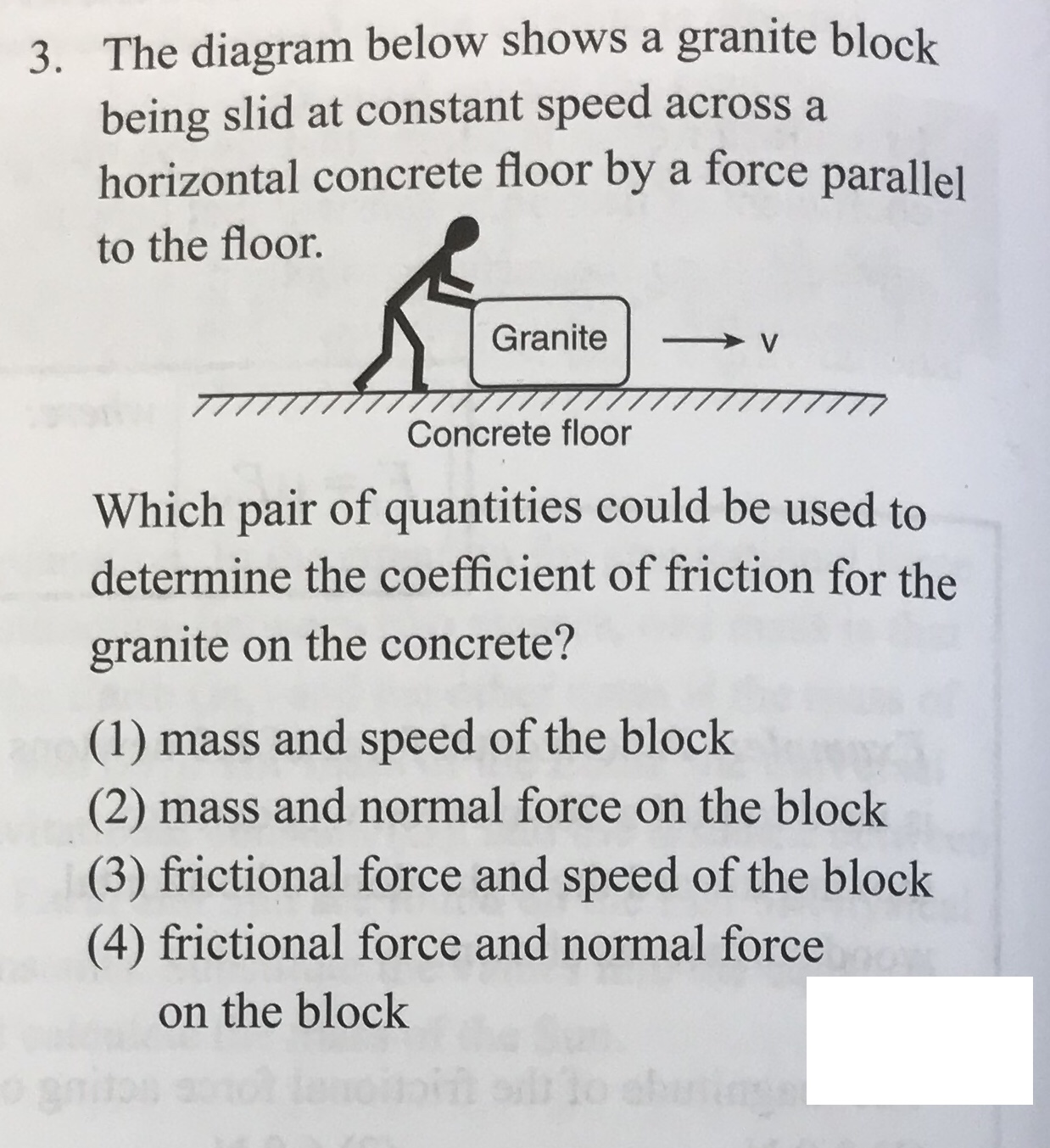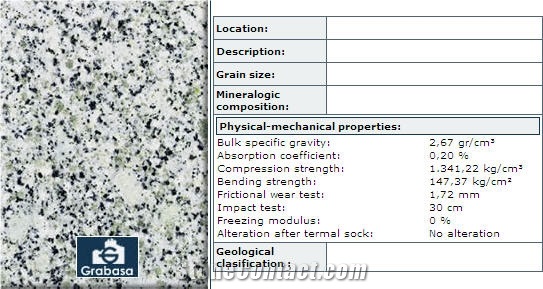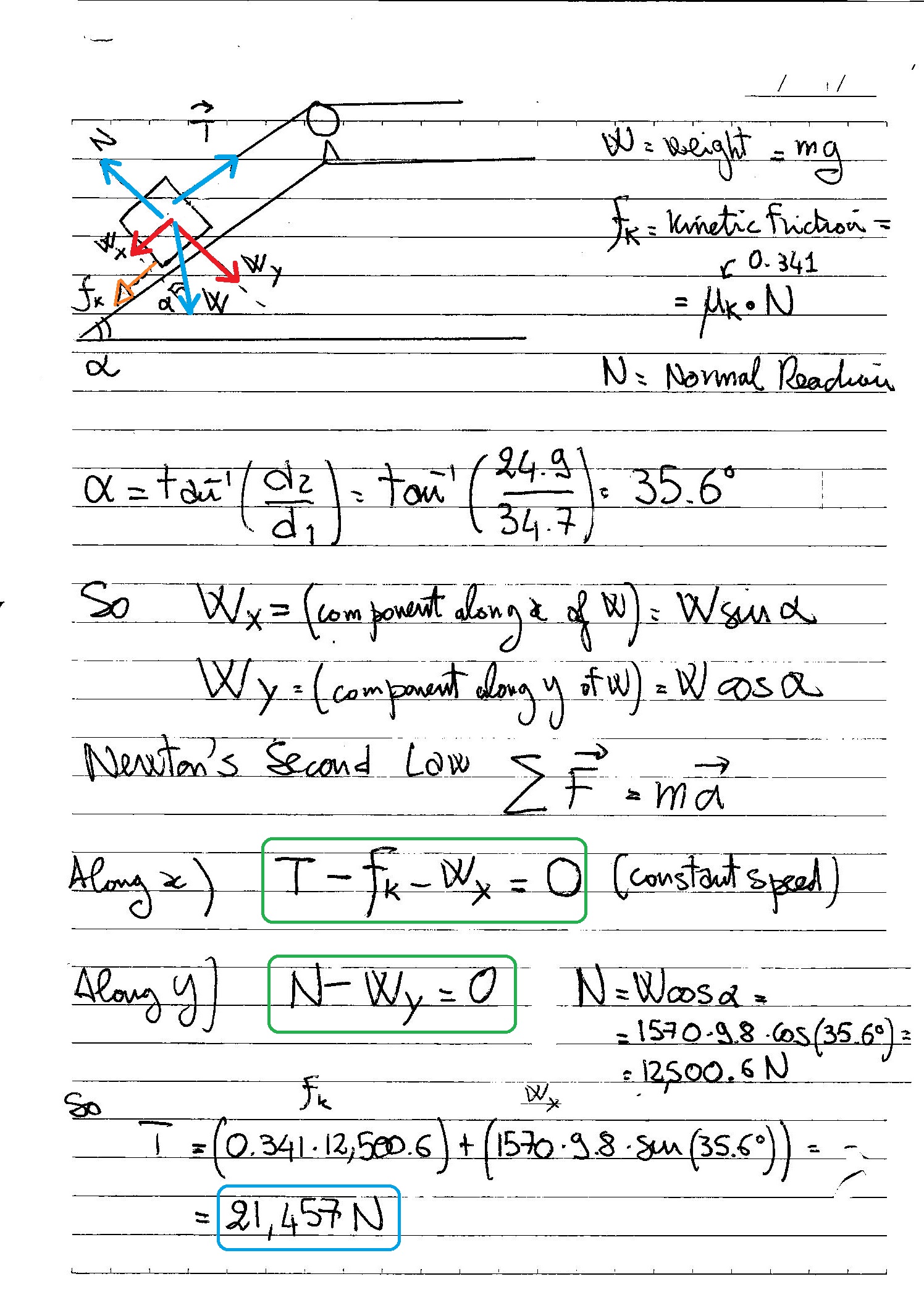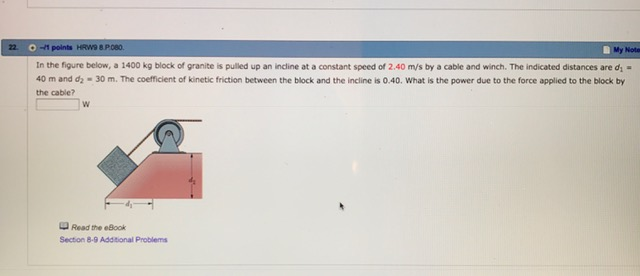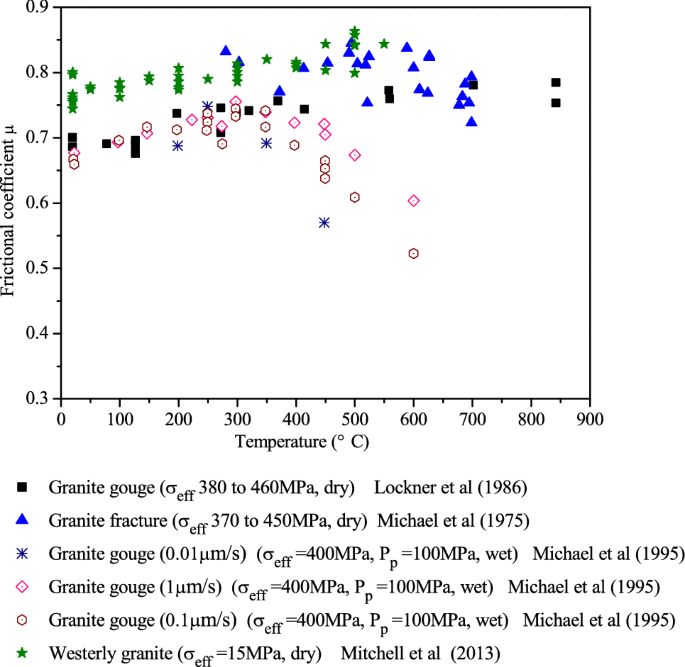Coefficient Of Friction Granite On Granite

μ static μ s or kinetic μ k frictional coefficient.
Coefficient of friction granite on granite. The first regime includes dry granite up to at least 845 and wet granite below 250 c. The coefficients of friction are independent of the surface area in contact. Direct shear tests were conducted on a granite to granite interface for the purpose of tracing the evolution of frictional resistance as the initially smooth and polished surface wears during continuing shearing displacement. The second regime includes wet granite above 350 c.
F f μ n 1. F f frictional force n lb. For a horizontal surface the horizontal force f to move a solid resting on a flat surface. The friction force is the force exerted by a surface when an object moves across it or makes an effort to move across it.
In this regime the coefficient of friction is high μ 0 7 to 0 8 and depends only modestly on temperature slip rate and p h 2 o. First you tape the low g accelerometer on the end of the surface in this case a slab of granite. For ground surfaces μ reaches a maximum after about 0 1 cm and then decreases to nearly a constant value after 0 5 cm of sliding has occurred. N normal force between the surfaces n lb there are at least two types of friction forces.
At the moment when sliding on the freshly manufactured interface starts first slip the friction angle is very low between 15 and 20 but then it increases with. Static coefficient of friction. At high confining pressure the coefficient of friction μ for granite depends on the relative displacement of the surfaces.

